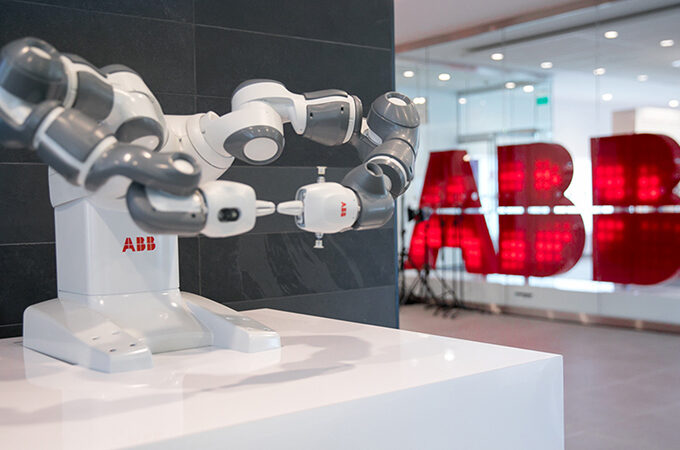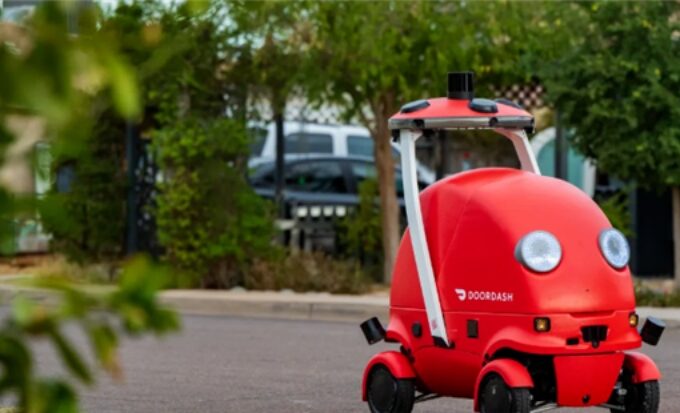As artificial intelligence (AI) and robotics continue to advance rapidly, robots are no longer just tools for performing tasks—they are increasingly becoming interactive companions, especially in fields requiring emotional engagement. Robots are already excelling at tasks involving physical movement, but when it comes to facial expressions, there is still a significant gap between robotic behavior and the fluid, dynamic range of human expressions. Despite the impressive capabilities of robots in executing various actions, their facial expressions often remain rigid and unnatural, unable to convey complex emotions as humans do. This limitation impacts their effectiveness in areas like healthcare, education, customer service, and companionship, where emotional interaction is key.
Recently, according to the latest report, researchers at Osaka University in Japan have proposed an innovative solution to this issue with a new technology called “dynamic expression awakening.” This breakthrough could allow robots to replicate human facial expressions more naturally and swiftly, offering a potential solution to the problem of stiff and overly simplistic robot emotions. The technology aims to address the rigidity in robot expressions by dynamically adjusting their facial movements, leading to a more fluid and realistic emotional portrayal. This advancement could significantly enhance the ability of robots to interact with humans in emotionally rich and meaningful ways, making them more effective in social interactions.
The Current State and Challenges of Robot Facial Expressions
In today’s world, robots are increasingly involved in social settings where emotional communication plays a central role. In healthcare, education, customer service, and even home assistance, robots need to connect emotionally with humans, and facial expressions are one of the most immediate and effective ways to convey emotions. Human faces are capable of expressing a wide range of emotions through the coordinated movement of over 40 facial muscles. In contrast, current robots struggle to achieve the level of subtlety and flexibility required for real human-like expression.
While some high-end robots can perform basic facial expressions like smiling, frowning, or blinking, these gestures often lack the fluidity and complexity of human facial movements. Instead, robots typically rely on pre-programmed expressions—like a simple smile or a neutral face—when interacting with people. This “puzzle-piece” approach to facial expression generation falls short of the nuanced emotional communication that human faces can deliver.
The underlying challenge is the complexity of replicating human facial expressions. Human expressions are not just the result of a single motion, but rather a complex interplay of various muscles responding to emotional states, environmental cues, and social interactions. Current technology often falls short in generating expressions that truly mimic the dynamism of human emotions, creating a noticeable gap between the natural emotional responses of humans and the robotic counterparts.
Osaka University’s Dynamic Expression Awakening System
In response to these challenges, researchers at Osaka University have developed a groundbreaking approach called the “dynamic expression awakening” system. This system uses waveform signals to simulate and regulate facial movements based on emotional states, allowing robots to express emotions more naturally and realistically. Unlike traditional systems that rely on pre-recorded expressions, the dynamic awakening system adjusts facial features—such as mouth opening, eyebrow movements, and head tilting—by manipulating different waveform signals according to the robot’s emotional state.

For instance, the researchers categorized natural actions like yawning, blinking, and breathing as distinct waveform signals and mapped them to specific facial movements like lip movements, eye blinks, and head movements. These signals are adjusted based on an emotional spectrum—from “tired” to “excited”—allowing the robot to generate appropriate facial expressions in real-time. Through this method, the robot can combine various small movements into a dynamic and realistic expression, making it capable of conveying a wide range of emotions, such as fatigue or enthusiasm.
For example, when simulating a “tired” emotion, the system adjusts the robot’s breathing rate, blinks, and yawns in a way that mimics the subtleties of a human who is feeling drowsy. These actions overlap and amplify or reduce the movements of the eyes, mouth, and head, resulting in a more natural, human-like expression of fatigue. The real-time nature of these adjustments means the robot can respond almost instantaneously to environmental changes or human interactions.
Potential Applications of Human-like Robot Facial Expressions
With this breakthrough, robots will be able to express emotions in more fluid and complex ways, opening up new possibilities in various fields where emotional engagement is crucial.
1. Healthcare and Companion Robots
In healthcare, especially in elderly care or with patients suffering from chronic conditions, robots can serve not only as functional assistants but also as emotional companions. These robots will be able to convey empathy through facial expressions, improving patient well-being. For example, if a patient feels anxious or sad, a robot could respond with a comforting expression, offering emotional support along with physical tasks. Additionally, when robots are able to simulate emotions like tiredness or joy, they can create a more engaging and emotionally connected environment for patients, helping alleviate feelings of loneliness or depression.
2. Educational and Childcare Robots
In education, especially for young children, robots are becoming useful educational tools that can offer personalized tutoring and emotional encouragement. With the ability to adjust their facial expressions in response to a child’s emotional state, robots can provide timely emotional feedback. For instance, a robot could display a concerned or encouraging expression when a child struggles with a task, or a joyful expression when the child succeeds. This emotional feedback can enhance the child’s learning experience and foster a more positive and engaging learning environment.
3. Customer Service and Service Robots
In customer service, robots that can effectively express emotions will enhance the quality of human-robot interactions. Whether in retail, hospitality, or tech support, a robot that can convey empathy or understanding through facial expressions is more likely to create a positive experience for the customer. For instance, when handling customer complaints, a robot can display a sympathetic expression to show concern, creating a sense of connection that helps defuse potentially negative situations. In home service robots, facial expressions can also improve user interaction by adding a layer of emotional awareness that makes the robot feel less mechanical and more personable.
Challenges and Ethical Considerations
Despite the exciting advancements in dynamic expression systems, several challenges remain before robots can fully replicate human-like emotional expressions. First, fine-tuning robots’ facial expressions to capture the subtleties of complex emotions remains a daunting task. The challenge lies not just in making the robot’s face move, but in accurately reflecting the full range of emotional depth—especially when emotions are mixed or subtle.
Moreover, as robots become more adept at mimicking human emotions, there arises the ethical concern of “anthropomorphization.” As robots display increasingly lifelike emotional expressions, there is a risk that people may form overly dependent emotional attachments to them. This could lead to unintended consequences, such as an over-reliance on robots for emotional support or misunderstandings about the robot’s capabilities and limitations. It will be crucial for designers and ethicists to ensure that robots’ emotional expressions do not manipulate users into forming attachments that may not be healthy.
Additionally, the ethical implications of robots expressing emotions—especially in vulnerable populations—must be carefully considered. How can we ensure that emotional expressions in robots are used responsibly? And how do we draw the line between creating robots that appear human-like and maintaining the distinction between humans and machines?
The Future of Emotional Robots
Looking ahead, the future of robots with human-like facial expressions seems full of promise. As AI and machine learning continue to evolve, robots will become increasingly adept at detecting and responding to human emotions. More advanced algorithms and deeper integration of AI will enable robots to not only mimic human facial expressions but to learn and adapt based on interactions with individuals, creating more personalized and emotionally intelligent robots.
Furthermore, as hardware technology progresses, robots will become more physically capable of exhibiting a wider range of facial movements, allowing for more nuanced emotional displays. This will likely lead to robots that are not only emotionally aware but also able to engage in richer, more empathetic interactions with humans across a variety of settings.
Conclusion
The breakthrough in dynamic expression systems is a significant step forward in the quest to create robots that can effectively communicate emotions. With more natural facial expressions, robots will be able to engage with humans in more emotionally intelligent and meaningful ways, enhancing their applications in fields such as healthcare, education, customer service, and beyond. As the technology matures, we may soon see robots that are not just functional machines but empathetic companions capable of understanding and responding to human emotions in real-time. Ultimately, this will transform the way we interact with robots, leading to a future where they are not just tools, but partners in our everyday lives.












